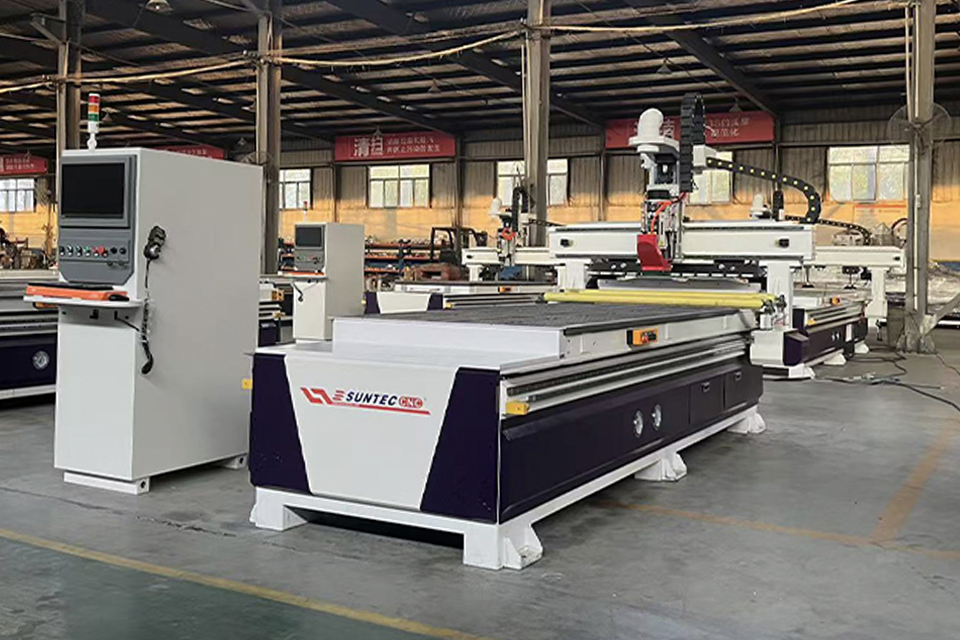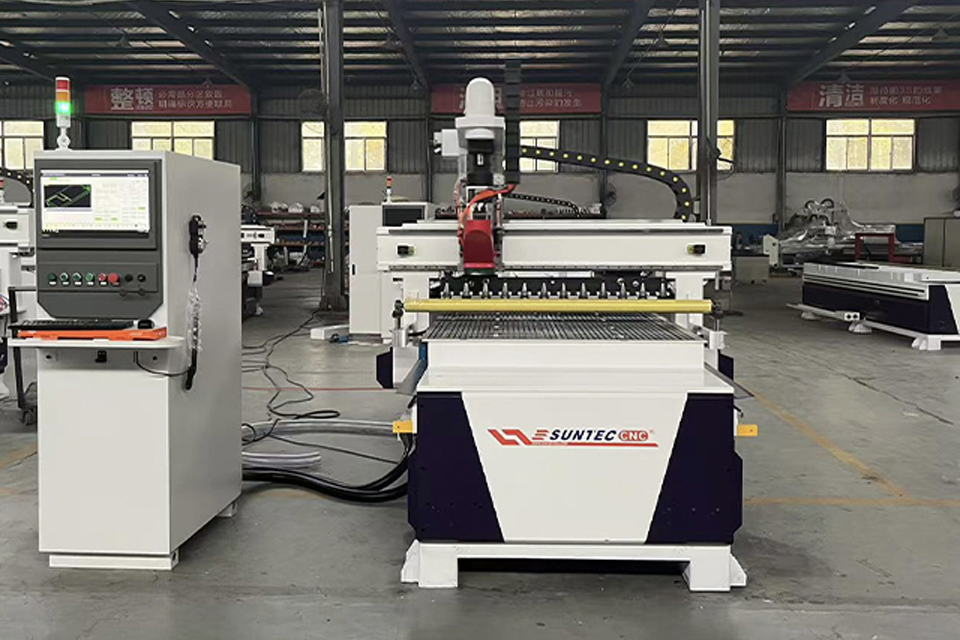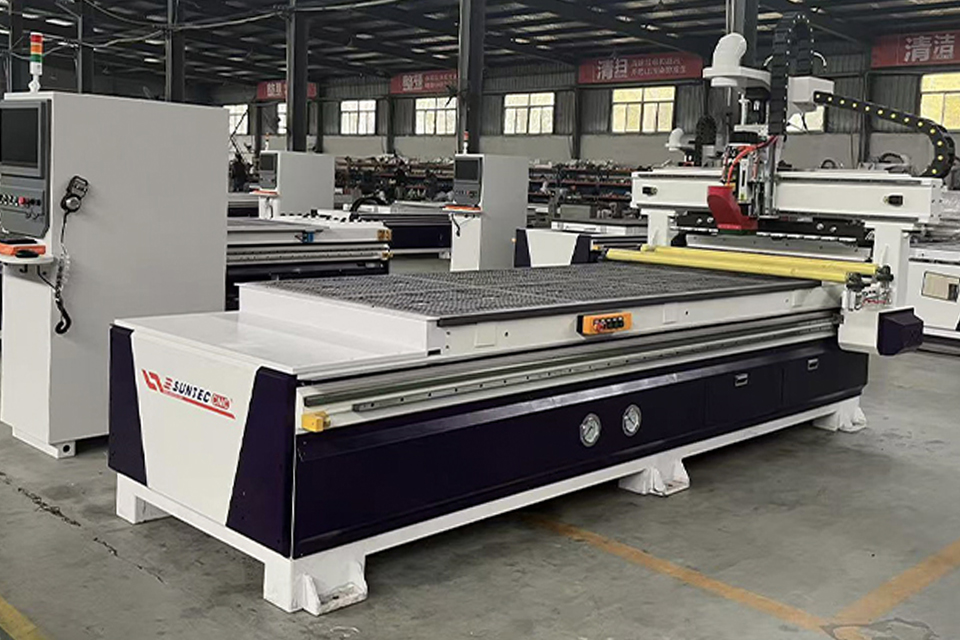Don't worry, contact your boss immediately


Modern manufacturing counts greatly on Computer system Numerical Control (CNC) technology. CNC makers automate the construction of custom components. They attain this with amazing accuracy. These devices run utilizing Computer-Aided Design (CAD) and Computer-Aided Manufacturing (WEBCAM) software. This software application overviews reducing tools with high precision. Producers make use of these systems for cutting, forming, and contouring work surfaces right into precise, specified forms. Amongst the varied array of CNC machinery, CNC milling equipments and CNC router systems are two prevalent options. Both utilize several axes of motion. This enables their cutting devices to deliver precise and complete cuts. This write-up supplies an extensive comparison of these two basic CNC device kinds. We will certainly discover their core attributes, essential operational distinctions, and vital considerations for selection. Comprehending these distinctions will certainly encourage makers to select the optimal service for their one-of-a-kind manufacturing demands, including when a custom-made CNC router or specialized custom-made CNC transmitting procedure might be the superior option.

CNC machinery offers amazing versatility. The appropriate CNC maker can considerably drive a team’s functional efficiency. A specifying feature of these devices is their subtractive production method. They systematically remove product from a strong block or sheet to attain the desired type. This contrasts sharply with additive manufacturing processes, like 3D printing, where machines develop products layer by layer.
Subtractive manufacturing begins with more material than the final part needs. The CNC equipment, directed by its program, precisely carves away the unwanted. This method is fundamental to typical machining and stays dominant for creating solid, sturdy parts from steels, plastics, wood, and composites. The accuracy of the product removal procedure directly impacts the high quality and dimensional stability of the end product.
All CNC machines, consisting of mills and routers, depend on a digital operations. Developers initial produce a 2D or 3D model of the part utilizing CAD software application. Designers or developers after that utilize camera software program to create toolpaths. These toolpaths determine how the cutting tool will cross the work surface. The camera software also determines cutting rates, feed rates, and device modifications. Ultimately, this information is converted into G-code, a language the CNC maker’s controller understands. This electronic hierarchy guarantees high fidelity from layout to physical component.
CNC milling devices stand as robust workhorses in the production market. They succeed when processing tough or durable materials. Their building prioritizes rigidity and torque distribution for demanding applications.
Makers frequently use CNC milling devices for materials such as:
Milling equipments attain remarkably fine and exact cuts. They typically operate within tolerances of a thousandth of an inch (0.001 inches or approximately 0.025 mm), or even tighter for high-precision models. This makes them excellent for producing in-depth, intricate, and dimensionally crucial elements.
Normally, CNC mills run by moving the workpiece in the X and Y axes (flat), while the spindle (holding the reducing device) moves along the Z-axis (vertically). The cutting tools turn at numerous rates, but the focus is often on torque to eliminate material effectively from challenging substratums. Many sophisticated CNC mills include more than three axes. Four-axis mills include a rotational capability to the table or pin. Five-axis mills offer synchronised activity in three linear axes and 2 rotational axes. This boosted expression enables machining complicated geometries in a solitary setup, reducing errors and improving performance.
The precision and strength of CNC milling equipments make them important in a number of essential sectors:.
CNC router systems supply a various set of benefits, largely focused on rate and bigger work envelopes, specifically for softer products. While often viewed as less durable than mills, modern-day high-end and custom CNC router designs can display impressive capabilities.
CNC router makers generally succeed with:.
The cutting devices on a CNC router (router little bits) rotate at extremely high changes per min (RPM), commonly varying from 18,000 to 30,000 RPM and even greater. This high rotational rate, rather than high torque, drives the reducing force. This makes them very reliable for swiftly getting rid of product from much less thick substratums.
In a regular CNC router arrangement, the spindle head moves along the X, Y, and Z axes over a stationary table where the workpiece is secured. Many basic models are 3-axis makers. However, advanced CNC router systems, especially customized CNC router develops, can integrate four, 5, and even six axes. These advanced configurations enable more complicated 3D sculpting, edge job, and machining on curved surface areas. Personalized CNC directing processes frequently utilize these multi-axis capabilities for specialized applications.
The rate and convenience of CNC router technology make it a preferred option in numerous industries:.
While common CNC mills and routers serve several basic objectives, the demand for maximized solutions has fueled the growth of the custom CNC router. A personalized CNC router is engineered to details client demands, going beyond off-the-shelf setups.
Companies opt for personalized CNC transmitting when basic makers can not meet specific dimension, speed, power, or product handling needs. This might include an extremely large work envelope for oversized sheets, specialized pins for special products, integrated automation for high-volume manufacturing, or special axis configurations for complicated geometries. The objective is to develop an equipment that completely fits a particular specific niche, optimizing efficiency and outcome.
Personalized CNC router producers can tailor various facets:.
While both CNC mills and CNC router systems perform subtractive manufacturing, numerous vital distinctions assist the option procedure. Makers have to meticulously evaluate these differences versus their task requirements.
CNC Milling Machines: These makers normally deliver remarkable precision and tighter resistances. The durable building, lower RPM/higher torque pins, and precision-ground elements (like sphere screws) contribute to their capability to hold precisions often gauged in the ten-thousandths of an inch (e.g., +/- 0.0005 inches). This makes them indispensable for applications where dimensional exactitude is critical, such as in aerospace, clinical, and high-precision tooling. CNC Routers: Standard CNC router systems typically provide excellent precision, frequently within a couple of thousandths of an inch (e.g., +/- 0.003 to 0.005 inches). While appropriate for lots of applications like woodworking and indicator production, this is typically much less accurate than a mill. Nevertheless, high-end or custom CNC router builds, crafted with enhanced strength, much better drive systems, and accuracy parts, can attain dramatically boosted precision, occasionally coming close to that of lighter-duty mills. The degree of precision in a customized CNC directing setup can be a details layout parameter.
CNC Milling Machines: Their inflexible frames and high-torque spindles are developed to reduce difficult products successfully. They produce significant cutting pressures, permitting them to device steels, titanium, and other tough alloys efficiently without too much device wear or babble. CNC Routers: CNC router systems succeed with softer materials like timber, plastics, foam, and non-ferrous metals (like aluminum, usually with haze coolant). Their high-speed pins are maximized for rapid product removal in these less dense products. While some robust routers can manage light cuts in aluminum, they normally do not have the torque and rigidity for heavy metal elimination. Attempting to maker difficult ferrous metals on a basic CNC router can cause poor outcomes, tool breakage, and maker damage.
CNC Milling Machines: Milling operations, especially in hard products, often entail slower pin rates (RPM) yet higher feed prices (how quickly the tool moves through the material) relative to the spindle speed. The focus gets on controlled, powerful cuts. While the procedure for a solitary component may appear slower, the capacity to produce very precise, complicated components, usually with less setups on multi-axis equipments, adds to overall task effectiveness. CNC Routers: CNC router machines flaunt extremely high spindle RPMs. This enables incredibly fast reducing speeds in softer materials. The gantry can pass through rapidly across large sheets, making routers ideal for high-volume manufacturing of components that do not need the best precision of a mill. For applications like nested-based manufacturing of cupboard components, a CNC router supplies outstanding throughput.
CNC Milling Machines: Milling devices usually have a smaller sized X-Y job envelope contrasted to routers yet generally offer better Z-axis travel (depth). This deepness capacity is crucial for machining thick blocks or producing deep pockets and cavities. CNC Routers: CNC router systems are well-known for their large reducing locations, regularly offered in sizes like 4×8 feet, 5×10 feet, or perhaps larger for custom CNC router develops. This makes them suitable for processing complete sheets of product like plywood, MDF, or large acrylic panels. While their Z-axis traveling is normally less than a mill’s, it is usually enough for a lot of woodworking, sign-making, and plastics construction jobs.
CNC Milling Machines: Mills utilize a variety of durable cutting tools (end mills, face mills, covering mills, drills, faucets, reamers) held in standard device owners (e.g., CAT, BT, HSK). Pins are created for high torque at lower to tool RPMs and are commonly liquid-cooled for sustained heavy cutting. CNC Routers: Routers use specialized router little bits (straight bits, V-groove, round nose, spiral up-cut/down-cut, compression little bits) usually held in collets. Spindles are high-speed (frequently 18,000-30,000+ RPM), highlighting rate over torque, and can be air-cooled or liquid-cooled. Custom CNC router arrangements could include specific pins or perhaps several pins for various jobs.
CNC Milling Machines: These devices stand out at creating high-quality, frequently critical, parts with exact specs. Parts for clinical tools, aerospace applications, and precision instruments call for the capacities of CNC milling. CNC Routers: CNC router systems are skilled at taking care of less vital element production where very tight tolerances are not the primary problem. They are superb for aesthetic parts, architectural components in wood or plastic, and large-format items. A custom CNC directing procedure, nonetheless, can be established for higher-precision parts if the device is built appropriately.

| Feature | CNC Milling Machine | Standard CNC Router | High-End/Custom CNC Router |
|---|---|---|---|
| Key Products | Metals (steel, titanium), tough plastics | Wood, plastics, foam, soft non-ferrous | Wood, plastics, composites, aluminum, other non-ferrous |
| Precision | Extremely High (e.g., ± 0.0005″) | Excellent (e.g., ± 0.003″ – ± 0.005″) | High (e.g., ± 0.001″ – ± 0.003″ or better) |
| Pin Speed (RPM) | Lower (e.g., <10,000 RPM) | Very High (e.g., 18,000-30,000+ RPM) | Extremely High, typically with programmable array |
| Torque | High | Reduced | Moderate to High (application-dependent) |
| Cutting Pressure | High | Reduced to Modest | Moderate to High |
| Work Envelope (X-Y) | Commonly Smaller | Usually Larger (e.g., 4′ x8′ common) | Can be large (customized specified) |
| Z-Axis Traveling | Usually Greater | Typically Lesser | Customized defined, can be substantial |
| Maker Strength | Extremely High | Modest | Modest to High (design-dependent) |
| Regular Expense | Higher | Reduced | Mid to High (based upon personalization) |
| Motion System | Workpiece typically moves in X-Y | Gantry (device) relocates X-Y, Z | Gantry (tool) relocates X-Y, Z |
| Ideal Use Instances | Precision metal components, mold and mildews, dies | Woodworking, signage, plastics, foam | Specialized woodworking, advanced composites, large-format accuracy, special material processing |
Regardless of their distinctions, CNC milling makers and CNC router systems share several crucial similarities and benefits stemming from their core CNC technology.
Both kinds of CNC equipments use substantial cost-effectiveness in manufacturing. They improve production procedures. They support advanced accuracy. This mix enables boosted effectiveness. These devices can operate continuously, often 24/7 with ideal automation, to maximize outcome and reduce lead times. Their precision allows CNC equipment to decrease material waste. They likewise lower labor expenses related to manual work and examination. Inevitably, these elements support higher productivity.
An essential advantage is their assimilation with CAD and web cam software. This synergy improves design-to-production operations. Designers and developers utilize computers to swiftly develop electronic prototypes. They can fine-tune designs quickly prior to devoting to physical manufacturing. Advanced electronic solutions can provide data analysis. Real-time surveillance guarantees the device performs as meant. This assists lessen mistakes. It additionally sustains reliable batch handling of the same components.
CNC automation substantially reduces the possibility for human mistake in the manufacturing procedure. As soon as a program is confirmed, the machine will certainly implement it identically every single time. This uniformity is tough, otherwise impossible, to achieve with hands-on approaches. CAD software assimilations and automated toolpaths help get rid of errors. Early mistake discovery and feedback loopholes in some innovative systems further boost integrity. For applications entailing the production of various the same parts, CNC mills and routers eliminate the need for hands-on arrangement for every part after the first programs. Operators established the program, and the equipment provides self-governing and constant results.
Running any kind of CNC device needs ability and adherence to security methods. Operators for both CNC milling makers and CNC router systems should put on proper personal protective devices (PPE). This includes eye defense, hearing security (particularly for routers), and occasionally breathing protection depending on the product being machined. Just experienced employees knowledgeable about operating finest methods ought to work with these tools. They have to recognize signs of malfunction, such as unusual sounds, too much vibration, product burning, or the device leaping. Competent drivers ensure the most safe and most effective results from CNC machinery. They are likewise crucial for configuration, programming (or program loading), and regular maintenance.
A major benefit of dealing with CNC mills and CNC router systems is their ability to offer extremely consistent and repeatable results. This level of uniformity is virtually difficult to attain by hand, particularly for complex components or big manufacturing runs. These devices offer enhanced quality control. This brings about product uniformity and fewer defects. Fewer flaws and mistakes indicate enhanced throughput. This, in turn, leads to greater client contentment. CNC devices offer predictability and better general efficiency for making procedures.
Picking the suitable device involves a careful evaluation of a number of factors.
If your key work includes hard steels like steel or titanium, a CNC milling device is often the right option. For timber, plastics, foam, and softer non-ferrous steels, a CNC router is usually preferable. The particular grade and solidity of the product will influence this choice.
For applications requiring extremely limited tolerances (e.g., aerospace, medical implants), a CNC mill is necessary. If the tolerances are a lot more loosened up, a conventional CNC router may be adequate. If high accuracy is needed on larger parts or with unusual materials much better fit to transmitting, a premium or custom CNC router made for precision must be thought about.
For little, very intricate 3D components, a 5-axis CNC mill could be optimum. For huge sheet job or moderately complex 3D makings in softer products, a 3-axis or multi-axis CNC router is better suited. A personalized CNC router can be constructed to manage remarkably large or abnormally designed components.
For high-volume manufacturing of parts from sheet materials, the speed of a CNC router offers significant advantages. For reduced volume, high-precision work, the slower, a lot more deliberate cutting of a mill might serve or required.
CNC milling equipments usually represent a higher first financial investment than typical CNC router systems. Custom-made CNC router options can differ commonly in price, from reasonably greater than a conventional router to matching the price of some mills, depending on the extent of personalization and attributes. A detailed ROI evaluation is crucial.
Consider a customized CNC router when:.

Both CNC milling devices and CNC router systems are powerful tools that have reinvented modern-day manufacturing. CNC mills give unequaled accuracy and strength for handling difficult products, making them crucial for essential parts in demanding industries. CNC router innovation offers speed, large work envelopes, and adaptability for a wide range of softer materials, excelling in fields like woodworking, sign production, and plastics manufacture.
The emergence and boosting elegance of the customized CNC router further increase the possibilities. By making it possible for manufacturers to define specific device configurations, custom CNC transmitting solutions bridge voids and satisfy highly specialized demands that neither a standard mill nor a common router may flawlessly deal with. The decision in between a CNC mill, a standard CNC router, or a custom-made CNC router rests on a comprehensive understanding of material residential or commercial properties, accuracy needs, part intricacy, production quantity, and budget. By very carefully evaluating these variables, suppliers can purchase the CNC modern technology that will best optimize their procedures, improve product high quality, and drive their one-upmanship in the advancing industrial landscape.